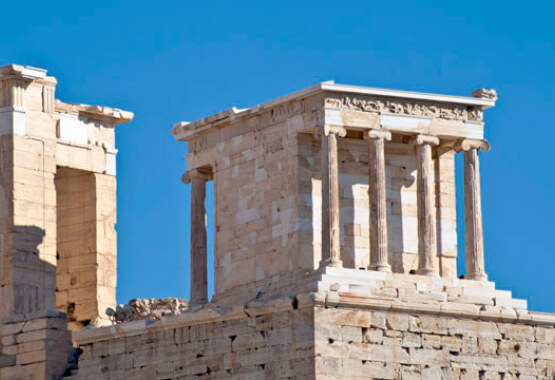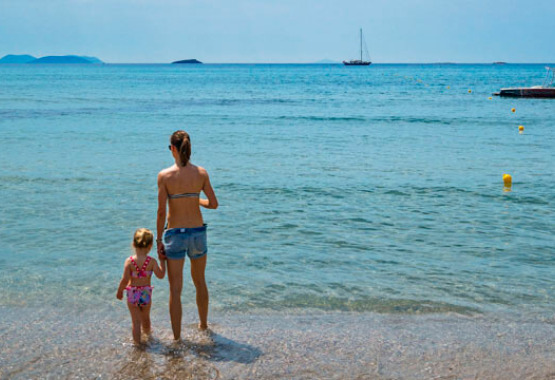
ATHENS
Notice the Doric columns, count their flutes and you will see that they are less in number than those on other temples of the same period (mid 5th c. BC). This feature is also found in other seaside ancient temples, for instance in the Temple of Aphaea in Aegina etc.
The Archaeological Site of Sounio
A Trip to Cape Sounio
The temple of Poseidon, the ancient Greek god of the sea, dominates the southernmost tip of Attica, where the horizon meets the Aegean Sea. Perched on the craggy rocks of Cape Sounio, the temple is enveloped in myth and historic facts dated from antiquity until the present times.Between myth and history
There are stories about the ship of King Menelaus who stopped briefly at Sounio on his way back from Troy; or about the unfortunate King Aegeus who drowned himself on that spot and the Aegean Sea got named after him; or about the people who built a temple using local marble to honour the god of the sea and safeguard the profits from the neighbouring Lavrio mines.Decorative elements
The unknown architect is probably the same one who built Theseion in the Ancient Agora of Athens. He decorated the temple with sculptures made of Parian marble (i.e. from Paros Island), which depicted the labours of Theseus as well as battles with Centaurs and Giants (Gigantes). The remaining sculptures are showcased in the Lavrio Museum whereas the impressive kouroi [male youths] that once stood in the temple yard are now on display in the National Archaeological Museum of Athens.Notice the Doric columns, count their flutes and you will see that they are less in number than those on other temples of the same period (mid 5th c. BC). This feature is also found in other seaside ancient temples, for instance in the Temple of Aphaea in Aegina etc.




